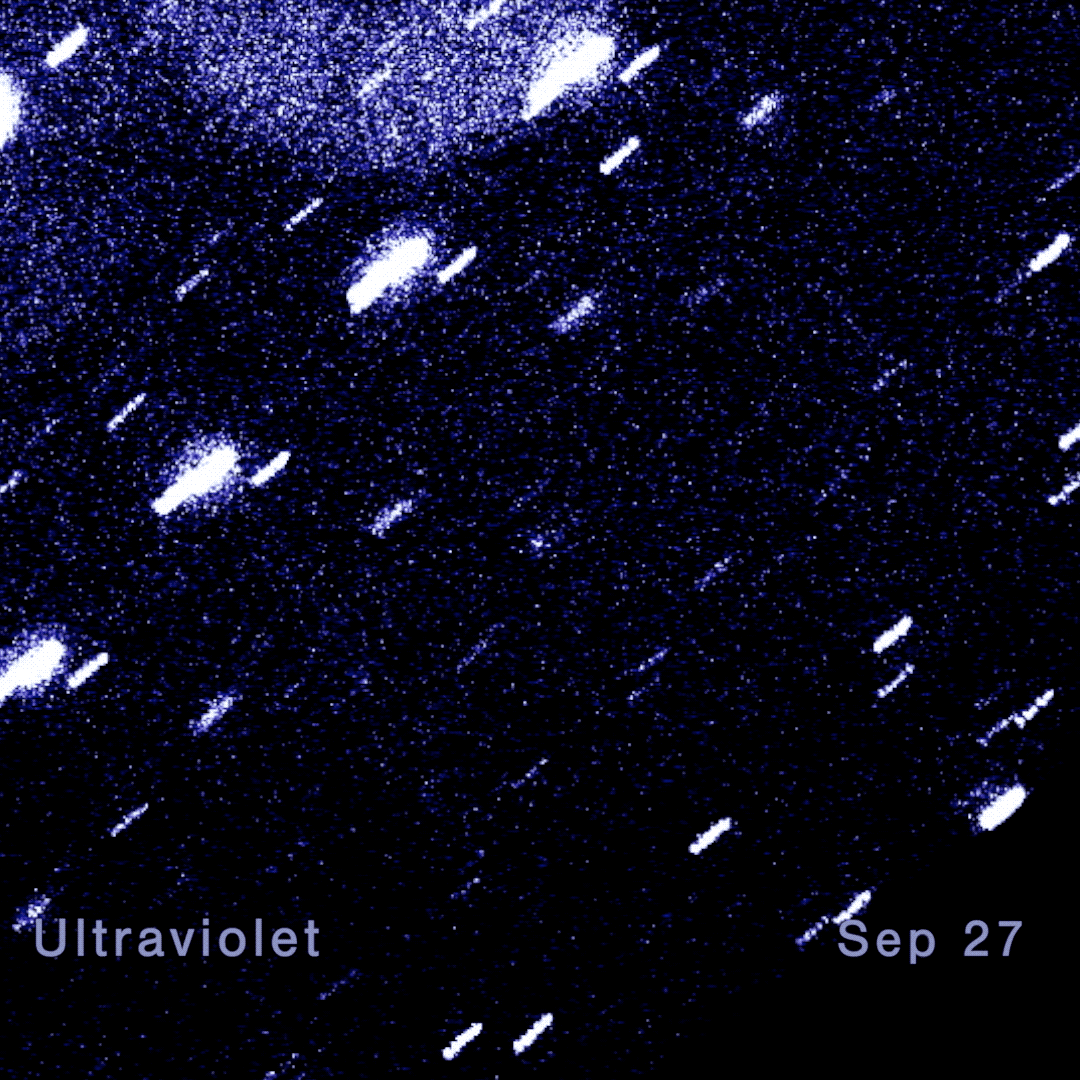At the end of summer 2019, amateur astronomer Gennady Borisov discovered through a 65-centimeter telescope
The first months, scientists argued whetherobject gb00234 (C / 2019 Q4 (Borisova), or 2I / Borisov) can be considered an interstellar comet or is it an ordinary comet, just with a strong parabolic orbit. Now the scientific community recognized 2I / Borisov as the first interstellar comet.
The comet began to collapse on March 4, when the object moved away from the Sun, and its brightness increased to 0.7 magnitude. Astronomers believe that the reason for this was the increased activity of its core.
Before this process began, astronomers trackedbehind how the object loses fluid as it approaches the sun. During this process, frozen material on its surface, such as carbon dioxide, passes from a solid to a gaseous state.

Studying a trace of hydroxyl, a molecule thatarises as a result of the decay of water, using the UVOT telescope allowed researchers to record the evaporation process. It began at a distance of about 370 million km from the Sun. From November 1 to December 1, 2019, researchers noticed a 50% increase in hydroxyl concentration in the vicinity of the comet.
Calculations showed that at the peak, the comet lost up to30 liters of water per second - this is enough to fill a standard volume bath in 10 seconds. For the entire time of its journey through the Solar System, 2I / Borisov lost about 230 million litas of water, the authors of the work write.
Earlier, astronomers saw fragments of the collapsed comet ATLAS - an object that was supposed to become the brightest comet in the last 10 years, but began to collapse as it approached the Sun.